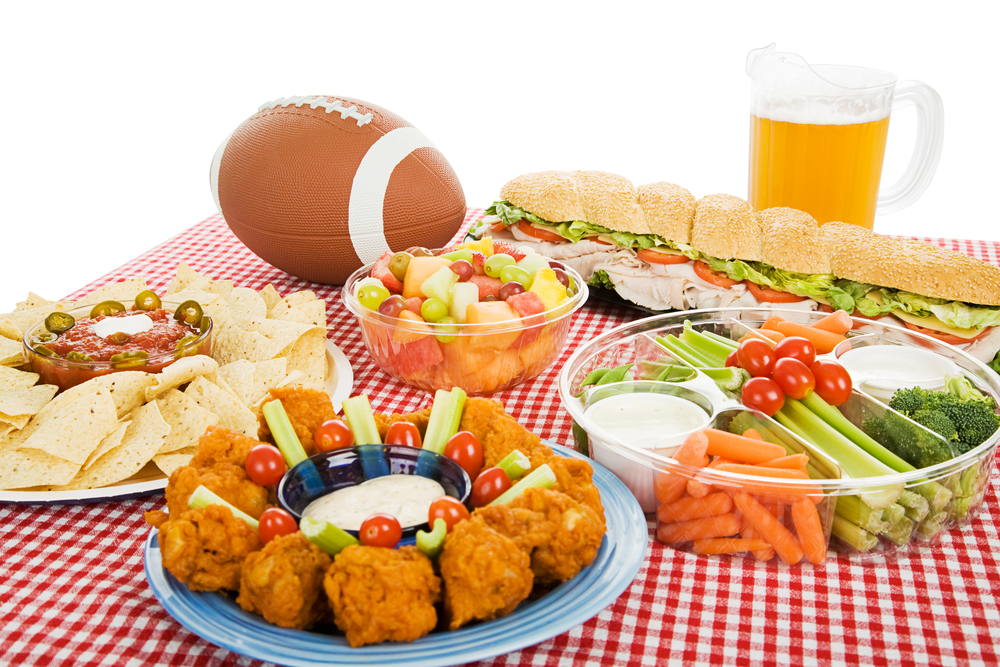Snack Down: The Rise and Fall of Super Bowl Snack Foods

Not so long ago, "avocado" was a kitchen appliance color, and "salsa" was just a dance. But as America braces for an onslaught of Super Bowl snacks, these words have a whole new relevance.
Many of the recent changes in U.S. snacking behavior result from America's altered demographics: Hispanics now make up more than a quarter of the U.S. population, the Associated Press reports, and Hispanic-style foods are expected to be an $11 billion market by 2017.
In fact, much of America's recent history can be told by the current favorites in a Super Bowl snack spread. [Super Bowl of Snack Foods (Infographic)]
Guacamole: It's green, it's gooey, and Americans are expected to dip into about 208 million avocados' worth of guacamole during the Super Bowl, according to the Haas Avocado Board. That's a 32 percent increase over 2013's consumption of guacamole and other avocado-based treats.
Much of this increase has been attributed to the growing acceptance of Mexican cuisine in North American kitchens. "When you think about pizza and spaghetti, it's the same thing," Jim Kabbani, CEO of the Tortilla Industry Association, told the AP, speaking of another "ethnic" food that's been wholeheartedly embraced by Americans. "People consider them American, not ethnic."
The avocado, Persea americana, is a native of Central America, but over the years its popularity has spread, and the tree is now cultivated in Australia, Asia, South Africa and other warm-weather regions. Avocados may be one of the healthiest Super Bowl snacks: They're high in protein, vitamins and healthy monounsaturated fats, and they contain no cholesterol.
Tortilla chips: In 2013, sales of tortilla chips grew faster than sales of potato chips (3.7 percent vs. 2.2 percent), and not only because of Hispanic shoppers.
Sign up for the Live Science daily newsletter now
Get the world’s most fascinating discoveries delivered straight to your inbox.
"The Hispanic market isn't the only one driving that taste profile," Tom Dempsey, CEO of the Snack Food Association, told the AP. "As manufacturers become more innovative on how to use tortilla chips, that will continue to take a larger share of the snack marketplace."
Though tortilla chips are usually made with whole-grain corn — and are often gluten-free — they may be fried in oils that are high in saturated and/or trans fats, and many brands of chips are high in sodium. Some health experts recommend baking your own tortilla chips from 100 percent corn tortillas, and adding only as much salt as you prefer.
Potato chips: Despite the burgeoning popularity of tortilla chips, potato chips are holding their own as the top-selling salted snack in terms of pounds sold. (It bears mentioning that many potato chips are now flavored with Hispanic-style ingredients, such as jalapeno peppers or nacho cheese). Football fans will consume an estimated 11.2 million pounds of chips during the Big Game, contributing a whopping 27 billion calories to the U.S. diet.
The potato chip was invented, according to legend, at a swanky resort in Saratoga Springs, N.Y. After an ornery customer kept sending back his fried potatoes because they were too thick, an even more-ornery chef named George Crum decided to slice some potatoes paper-thin. The crispy snacks were a hit, and soon "Saratoga chips" became a regional favorite, eventually going worldwide.
Dip: Before World War II, there were just a few recipes for what's now called "dip," though people had been dunking bread and crackers into soups and sauces for centuries. A 1947 edition of the Fannie Farmer cookbook included a recipe for mayonnaise preparations, flavored with mustard or Worcestershire sauce, that were made for dipping asparagus tips or cauliflower florets.
By the 1950s, the Lipton Company was searching for new ways to market its line of dried instant soups. By mixing the soups with sour cream, the company launched a whole new era in eating, creating a mix intended for no other purpose than to dip celery, carrots or chips. According to Fox News, 32 percent of Americans plan to scoop up some kind of creamy dip during the Super Bowl.
Salsa: Tomato-based salsa, the most popular type of salsa sold in the United States, overtook ketchup in sales in 1991, according to The New York Times. Food historians cheered the dethroning of ketchup as the condiment king, since salsa's spicy blend of tomatoes, peppers, onion, garlic and other flavors heralded the dawn of more sophisticated, cosmopolitan taste buds.
Sophisticated or not, market research indicates that salsa sales now beat ketchup sales two-to-one, the AP reports, and health concerns are part of the reason: "When it comes to health, the Mexican cuisines cater better to that, with salsas and vegetables," Alexandra Aguirre Rodriguez, an assistant professor of marketing at Florida International University, told the AP.
Follow Marc Lallanilla on Twitter and Google+. Follow us @livescience, Facebook & Google+. Original article on LiveScience.










